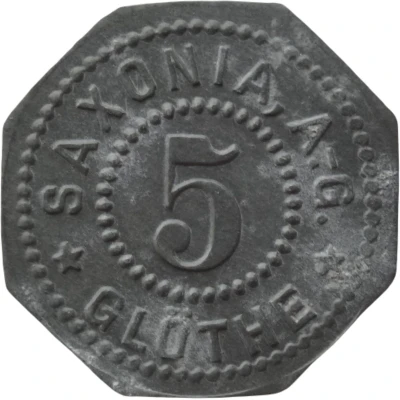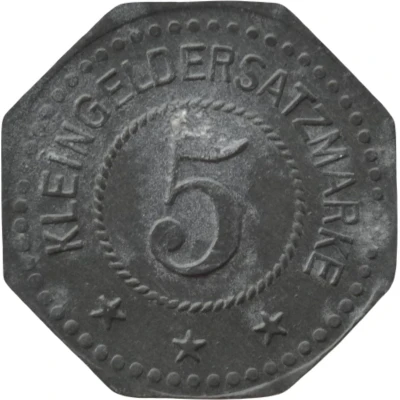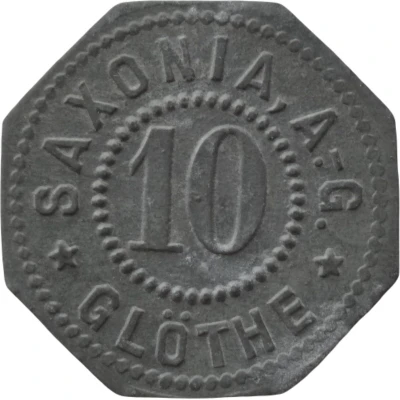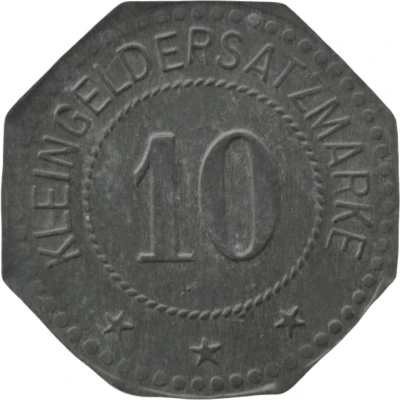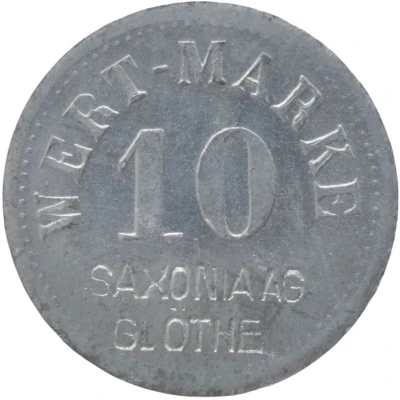
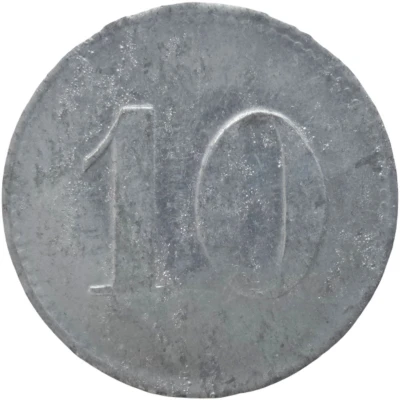

© Willem63 (CC BY-NC-SA)
10 Pfennigs - Glöthe (Saxonia AG) ND
| Nickel plated zinc | 1.6 g | 19.3 mm |
| Issuer | Municipality of Glöthe (Prussian province of Saxony) |
|---|---|
| Type | Standard circulation coin |
| Value | 10 Pfennigs (10 Pfennige) (0.10) |
| Currency | Mark (1914-1924) |
| Composition | Nickel plated zinc |
| Weight | 1.6 g |
| Diameter | 19.3 mm |
| Thickness | 0.9 mm |
| Shape | Round |
| Technique | Milled, Countermarked |
| Orientation | Medal alignment ↑↑ |
| Demonetized | Yes |
| Updated | 2024-10-04 |
| Numista | N#319946 |
|---|---|
| Rarity index | 97% |
Reverse
Pearl rim, with denomination centered
Script: Latin
Lettering: 10
Edge
Plain
Comment
Menzel: BBBFa: Zementfabrik
Interesting fact
One interesting fact about this coin is that it was minted during a time of economic turmoil in Germany. The 10 Pfennigs coin was introduced in 1923, during the hyperinflation period that followed World War I, when the value of the German mark had dropped significantly. The use of nickel-plated zinc for the coin's material was likely a cost-saving measure, as it was cheaper than other metals. Despite the economic challenges, the coin's design, featuring the image of a woman symbolizing the municipality of Glöthe, remains a notable example of early 20th-century German numismatics.
